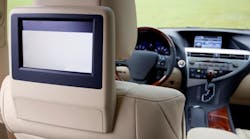Here is a brief look as some of the technology you can expect to see in future connected vehicles.
• Operating systems (OSs): As telematics systems get more complex, an OS is needed to organize and manage their many functions and features. The OS takes care of the in-vehicle infotainment (IVI) system. A key part of this is the human-machine interface (HMI), which includes the display and any controls, hardware or touch. Popular OSs include BlackBerry’s QNX and Microsoft Windows Embedded. The QNX OS is used in the instrument cluster HMI in Jeep Wranglers. Microsoft OS is used in Ford’s Sync system. While these proprietary systems are popular now, the GENIVI Linux-based platform is an effort to provide an open OS and development system. Symphony Teleca, one of the companies involved in helping automotive companies manage the global convergence of software, the cloud, and connected devices, partners with clients to conceive, build, and deploy OS technologies, infotainment systems, and vehicle management software.
• Voice-response systems: Already in some cars now, voice-response systems are used mainly for automated dialing in hands-free Bluetooth systems. Look for them in an expanded form similar to Apple’s Siri or Google’s Voice Search systems. They will let you operate the radio and music systems and perhaps even implement text-to-voice or voice-to-text operations. Many manual vehicle operations also can be fitted with voice-control technology to minimize driver distraction.
• Driver monitoring: Special modules capture vehicle operation information from the standard on-board diagnostic port (ODB-II), which has been part of most vehicles since 1996. It shows speeds, trip duration, gas mileage, and other vehicle information and records it. The module is then plugged into a computer to capture the data. Insurance companies like Allstate, Liberty Mutual, and Progressive now use these modules with volunteer customers to reward good drivers with lower rates, though poorer drivers could be charged higher rates. A commercial version called Automatic Link delivers the data via Bluetooth to a smart phone where drivers can use it with an app to improve their driving.
• Vehicular radar: Short-range radars operating in the 77- to 79-GHz millimeter wave band are now being used to operate automatic braking on vehicles for automated collision detection. Look for these radars to become a standard feature on more vehicles in the future.
• Apps: Auto manufacturers are already beginning to develop applications that can run on embedded computers in telematics systems. The manufacturers want to control what goes into the vehicle rather than rely on special apps for vehicles that may be developed for non-embedded smart-phone-based vehicles. Research firm Juniper Research forecasts that the market for in-vehicle apps will be worth over $1.2 billion by 2017.

